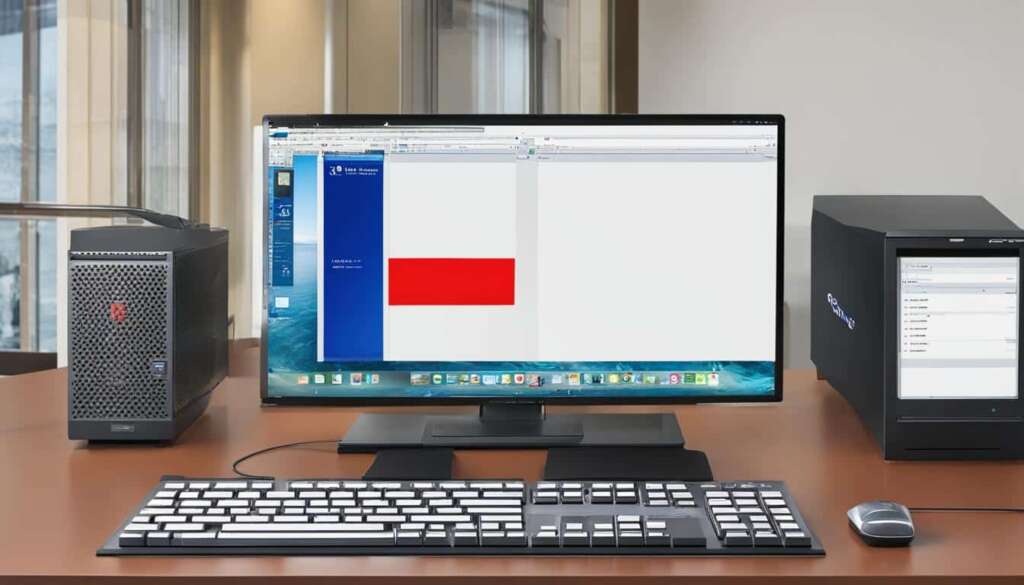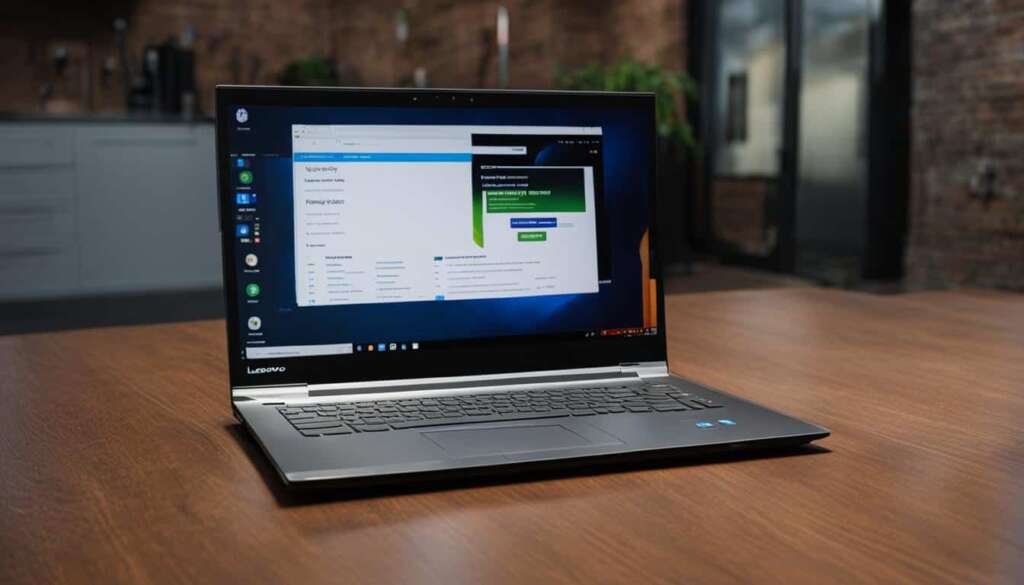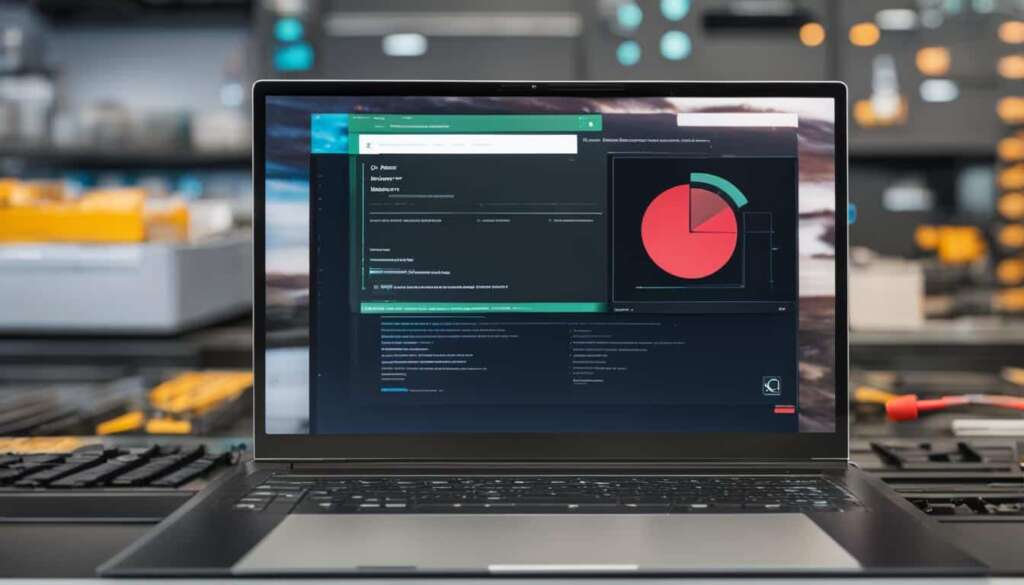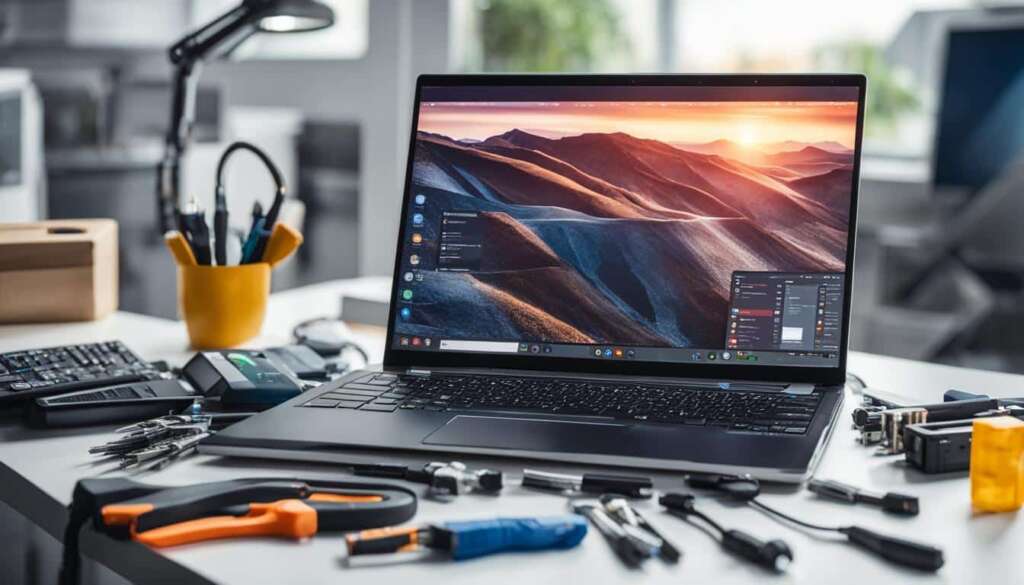Table of Contents
If your Windows machine is acting up, there are several options available before you do anything drastic. You can run a diagnostic test to check the health of your hard disk. If the problem occurred after a Windows update, you can try uninstalling the update. However, if none of these methods work or if you plan to sell or get rid of the computer, it may be time to reset your PC to its factory settings. It’s important to note that resetting your PC can wipe your files and settings, so make sure to back up your files first.
How to Reset Windows 10
To reset your PC in Windows 10, follow these step-by-step instructions:
- Click the Start menu and select the gear icon to open the Settings window.
- Under Settings, click on Update & Security.
- Then, select Recovery.
- From there, click on the Get started button under Reset this PC.
- You will have the option to choose between keeping your files or removing everything.
- If you choose to remove everything, you will also have the option to reinstall Windows from local storage or do a cloud download from Microsoft’s servers.
- After making your selections, click Next and your PC will restart and boot back up with the reset settings.
Resetting your Windows 10 PC can help resolve various issues and bring it back to its default state for smoother functioning.
If you decide to reset your PC, make sure to back up your files first, as the process can wipe your files and settings. Once the reset is complete, you can sign back into Windows and check if the issues you were experiencing have been resolved. Remember that customizing additional settings, such as restoring preinstalled apps or securely overwriting data, can be done before initiating the reset process.
Benefits of Resetting Windows 10
Resetting your Windows 10 PC can provide several benefits:
- Resolve software-related issues that may be causing your PC to malfunction.
- Improve performance by starting fresh with a clean installation of Windows.
- Get rid of unwanted files, programs, and settings that may be slowing down your PC.
- Prepare your PC for sale or transfer by wiping personal data and settings.
By following the steps outlined above, you can easily reset your Windows 10 PC and enjoy a smoother computing experience.
How to Reset Windows 11
In Windows 11, you have multiple ways to reset your PC to its factory settings. You can open Settings and go to System, then select Recovery. Alternatively, you can go to Settings, click on Windows Updates, then go to Advanced options and select Recovery. From there, click on Reset PC next to the Reset this PC option. Similar to Windows 10, you will have the option to keep your files or remove everything. You can also choose between a local reinstall or a cloud download. Once you’ve made your choices, click Next and your PC will restart and boot with the reset settings.
To reset your Windows 11 PC, follow these step-by-step instructions:
- Open the Settings menu by clicking on the Start button and selecting the cog icon.
- In the Settings window, click on System and then select Recovery from the left-hand menu.
- Under Recovery, click on the Reset PC button located next to the Reset this PC option.
- You will be presented with two options: Keep my files or Remove everything. Choose the option that suits your needs.
- Next, you will need to decide whether you want to reinstall Windows from local storage or do a cloud download from Microsoft. Make your selection and click Next.
- Windows will display a summary of what will happen during the reset process. Review the information and click on the Reset button to continue.
- Your PC will restart and begin the reset process. This may take some time, so be patient.
- Once the reset is complete, your PC will boot up with the reset settings.
It’s important to note that resetting your PC will remove all installed applications and personal files, so it’s crucial to back up any important data beforehand. Additionally, make sure you have a stable internet connection if you choose to do a cloud download for the Windows reinstallation.
| Reset Instruction | Windows 10 | Windows 11 |
|---|---|---|
| Open Settings | Start Menu → Settings → Update & Security → Recovery | Settings → System → Recovery |
| Select Reset this PC | Click on Get started under Reset this PC | Click on Reset PC |
| Choose Reset Options | Keep your files or Remove everything | Keep your files or Remove everything |
| Select Reinstall Option | Local reinstall or Cloud download | Local reinstall or Cloud download |
| Click Next and Restart | Click Next and your PC will restart | Click Next and your PC will restart |
By following these steps, you can easily reset your Windows 11 PC to its factory settings, resolving any performance issues or preparing it for sale or disposal. Remember to back up your files and make note of any important settings or applications before performing the reset. With a fresh start, your PC will be ready for smooth functioning.
Customizing Additional Settings
After choosing to reset your PC and before clicking Next, you have the option to customize additional settings. This allows you to tailor the reset process according to your preferences and specific requirements. Here are some key settings you can modify:
Restore Preinstalled Apps
By default, when you choose to keep your files during the reset process, Windows will restore any preinstalled apps that were originally included with your PC. However, if you prefer to start with a clean slate and manually reinstall your preferred apps later, you can disable this option. This gives you more control over the apps that are installed on your reset PC.
Clean Data
If you have sensitive data on your PC that you want to securely erase, enabling the Clean Data option is recommended. This ensures that your files are securely overwritten during the reset process, making it more difficult for anyone to recover them. Keep in mind that enabling this option will lengthen the reset process, but it is worth it if you’re planning to sell or give away your computer.
Reinstall Windows
During the reset process, you will be asked how you want to reinstall Windows. You can choose between a local reinstall or a cloud download. If you have a local copy of Windows installation files saved on your PC, you can select the local reinstall option. On the other hand, if you don’t have the installation files or prefer to download them from Microsoft’s servers, you can choose the cloud download option. Consider your internet connection speed and availability of installation files when making this choice.
Wipe Additional Drives or Workplace Resources
If your PC has multiple drives or if it is used for work purposes and connected to workplace resources, you will be given the option to wipe these additional drives or workplace resources during the reset process. This allows you to remove any data or configurations associated with these drives or resources, ensuring a complete reset of your PC.
Customizing these additional settings gives you more control over the reset process and allows you to tailor it to your specific needs. Take the time to review your options before clicking Next and proceed with the reset process. This way, you can ensure that your PC is reset in the way that best suits your requirements.
Resetting Your Computer
When it comes to resolving issues with your PC or preparing it for sale, resetting your computer to its factory settings can be an effective solution. By following the step-by-step guide provided, you can reset your PC and ensure optimal performance. However, before proceeding with the reset, it’s crucial to back up your files to avoid losing any important data.
To reset your computer, you have two options: keeping your files or removing everything. If you choose to keep your files, the reset process will remove installed apps but preserve your personal data. On the other hand, selecting the option to remove everything will completely wipe your PC, including both apps and personal files.
| Reset Options | Impact |
|---|---|
| Keep my files | – Removes installed apps – Preserves personal files |
| Remove everything | – Wipes all apps and personal files |
Once you’ve chosen the reset option that suits your needs, Windows will generate a summary of the changes that will occur during the reset process. At this point, you can review the list of apps that will be removed if you’ve selected the “Keep my files” option. If you’re ready to proceed, click the Reset button to initiate the reset process.
After clicking Reset, your computer will restart and begin resetting to its factory settings. Once the process is complete, your PC will boot up with the reset settings. If you’re planning to continue using the computer, sign back into Windows and verify that the items you chose to remove have been successfully wiped from the machine. If you’re selling or giving away the PC, your work is done. To restore your backed-up files, you can utilize online backup services or a recovery drive.
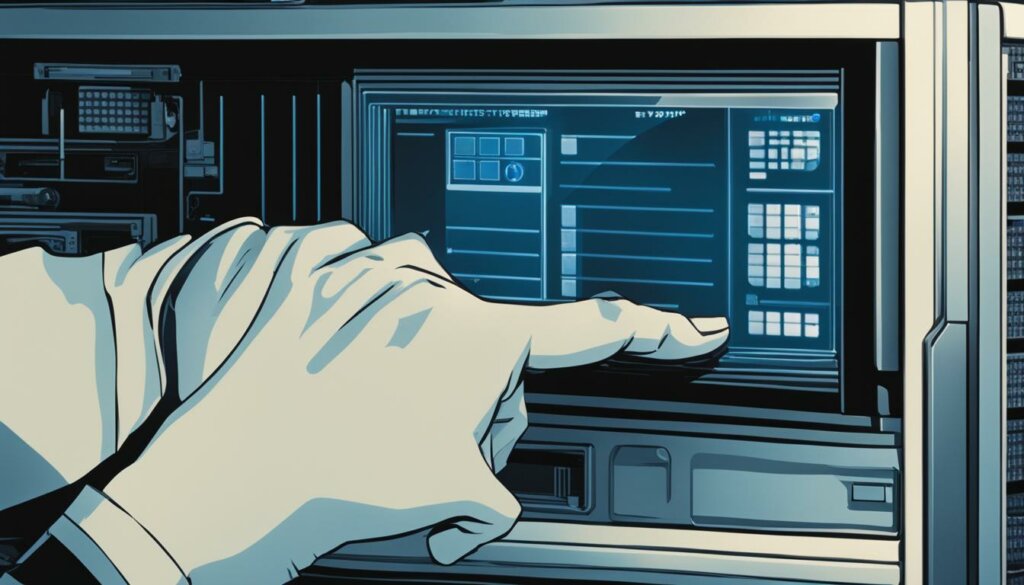
Safeguarding Your Data
Resetting your computer is a powerful tool, but it’s important to exercise caution when selecting the reset option that best suits your needs. If you’re planning to sell or give away your PC, choosing the “Remove everything” option is recommended as it ensures that all personal files are securely wiped from the device. However, if you’re resetting your PC to resolve performance issues, selecting the “Keep my files” option allows you to retain your personal data while removing potentially problematic apps.
Regardless of the reset option you choose, it’s always advisable to back up your files first. This ensures that you have a copy of your important data in case of any unexpected issues during the reset process. Utilizing online backup services or creating a recovery drive are effective methods to safeguard your files and simplify the restoration process after resetting your PC.
By following these steps and taking appropriate precautions, resetting your computer can help restore its functionality or prepare it for a new owner. Whether you’re encountering performance issues or simply seeking a fresh start, resetting your PC is a valuable troubleshooting technique.
Resetting Your PC with a Bootable USB
If your PC won’t start or if you prefer to reset using a bootable USB, you have the option to do so. Creating a bootable USB allows you to perform a PC reset even when your operating system is unresponsive. Follow these steps to reset your PC using a bootable USB:
- Format your drive: Open File Explorer and navigate to “This PC.” Right-click on the drive you want to use for the bootable USB and select Format. Choose exFAT as the file system and click Start to begin the formatting process.
- Create a recovery drive: Connect a USB drive to your PC and search for “Create a recovery drive” in the taskbar. Follow the prompts to select the USB drive and create the recovery drive. This process will copy the necessary system files to the USB drive.
- Boot into Windows Recovery Environment: Go to the login screen and click on the Shutdown button while holding the Shift key. Select the Restart option to boot your PC into the Windows Recovery Environment.
- Select the bootable USB: Once in the Windows Recovery Environment, click on “Use a Device” and select your bootable USB drive from the list. This will initiate the reset process and allow you to restore your PC to its factory settings.
By using a bootable USB, you can overcome boot issues and perform a PC reset without relying on the operating system. This method is especially useful when your PC is unresponsive or when you need to reset your PC before selling or giving it away.
Using a bootable USB gives you the flexibility to reset your PC in various scenarios. Whether your PC won’t start or you prefer a clean reset without relying on the operating system, a bootable USB can be a valuable tool. Make sure to follow the steps carefully and choose the correct drive for formatting and creating the bootable USB. Always remember to back up your important files before performing a PC reset to ensure you don’t lose any data.
Conclusion
Resetting your PC can be a useful solution if your computer is experiencing issues or if you’re planning to sell or give it away. By following the step-by-step guide provided, you can reset your PC to its factory settings and ensure optimal performance. Remember to back up your files before resetting and consider customising additional settings based on your preferences. Whether you’re using Windows 10 or Windows 11, the process is relatively straightforward and can be completed with ease.
So, if you find yourself facing problems with your Windows machine or if you’re looking to start fresh, resetting your PC can be a reliable option. Just make sure to follow the instructions carefully, back up your important data, and customize the settings to suit your needs. With a step-by-step approach and a few clicks, you can reset your PC and enjoy a smooth functioning experience.
So, why wait? Take control of your PC’s performance today and reset it to its factory settings. Follow the step-by-step guide provided in this article and experience the benefits of a fully refreshed PC. Say goodbye to those frustrating issues and enjoy a smoother and more efficient computing experience. Resetting your PC has never been easier!
FAQ
What options should I try before resetting my Windows PC?
Before resetting your Windows PC, you can run a diagnostic test to check the health of your hard disk. You can also try uninstalling any recent Windows updates that may have caused the issue.
Will resetting my PC delete all my files and settings?
Yes, resetting your PC will erase all your files and settings. It’s important to back up your files before proceeding with the reset.
How do I reset my PC in Windows 10?
To reset your PC in Windows 10, click the Start menu, select the gear icon to open the Settings window, go to Update & Security, select Recovery, and click on the Get started button under Reset this PC.
How do I reset my PC in Windows 11?
In Windows 11, you can reset your PC by going to Settings, selecting System, then Recovery, and clicking on the Reset PC option. Alternatively, you can also go to Windows Updates, select Advanced options, and then choose the Recovery option.
Can I customize additional settings before resetting my PC?
Yes, before clicking Next to proceed with the reset, you have the option to customize additional settings. You can choose whether to restore preinstalled apps, enable clean data to securely overwrite your files, and change your answer regarding reinstalling Windows and wiping additional drives or workplace resources.
How long does the resetting process take?
The resetting process can take some time, depending on the speed and specifications of your PC. It’s recommended to be patient and let the process complete uninterrupted.
How can I reset my PC using a bootable USB?
To reset your PC using a bootable USB, you need to format your drive to exFAT, create a recovery drive on a USB drive, and then boot your PC into the Windows Recovery Environment by selecting the USB drive as the boot device.
Is resetting my PC a useful solution for fixing issues?
Resetting your PC can be a useful solution if your computer is experiencing issues. It allows you to start fresh and restore your PC to its factory settings, potentially resolving any software-related problems.

